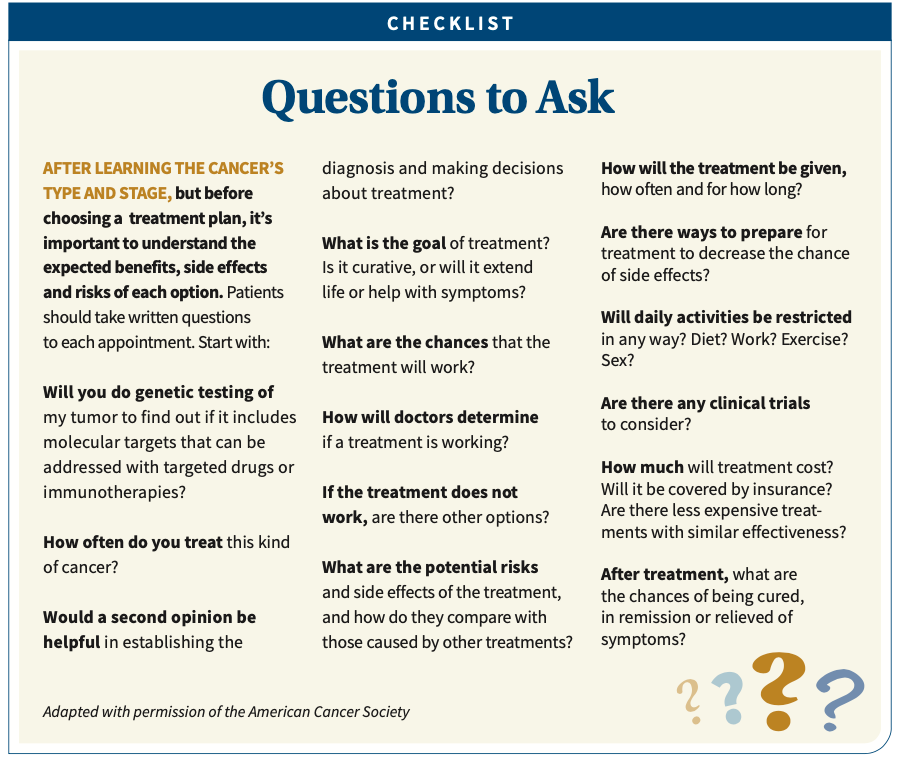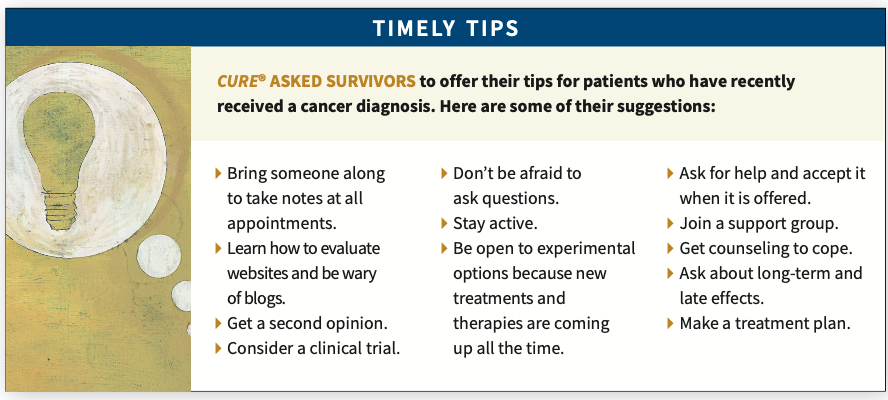Article
Making Medical Decisions
Taking the right steps can help patients handle the stress of treatment selection.
The doctor-patient relationship has changed. In times past, patients dutifully followed doctors' orders with few questions. Today, more patients are making medical decisions in partnership with their health decisions in partnership with their health care teams. It's not easy, due in part to the ever-increasing number of treatment options available.
For some patients, the right choice is treatment with a goal of cure, as long as there is some chance that outcome is possible, and regardless of the risks and costs of treatment. For others, cure is not the best goal because the chance of achieving that outcome is low and the price (discomfort, travel, expense, risk of death or complications) is high.
Doctors can provide patients with statistical data for each treatment option regarding chances of remission, cure rates, complications, side effects and mortality. They might be able to give some idea of what the treatment experience will be like. Survivors who have been through similar treatments can usually offer insight into what to expect, and doctors can refer patients who are willing to share their recollections and advice.

As patients weigh their options and discuss them with their doctors, they should consider these steps:
KNOW THE OPTIONS. Patients shouldn't try to decide which choice is best at the time they receive their diagnosis—just identify as many options as possible, even if some seem far-fetched. Research indicates that most patients want complete medical information from doctors and to share the decision-making authority with them by creating a true partnership. Different doctors could recommend different drug or treatment combinations at various intervals. Then again, the best treatment might be no treatment. Patients diagnosed with certain slow-growing cancers may be given the option of being closely monitored (“watchful waiting”) if there are no serious symptoms.
LEARN THE TRADE-OFFS. Once patients have a list of options, they should weigh the positives and negatives about each one. The goal is to know the risk versus the benefit of each option.
DISCOVER THE DATA. Patients should find out as much as they can about each option by talking with their doctors and doing research. For a crash course in any cancer, as well as news of cutting-edge treatments, visit cancer.org, cancer.net or cancer.gov.
BE VIGILANT. Patients should make sure the resources they check are credible.
CONSIDER THE MEANING. A medical decision can mean different things to different people. Patients should understand how medical decisions can affect their quality of life and how these choices may affect their loved ones.
ACT WITH CONFIDENCE. It can be a tremendous relief for both patient and doctor once they settle on a treatment plan, but in the world of cancer, each decision carries a measure of uncertainty. Patients soon come to understand what oncologists have always known: Their treatments might or might not be effective. But in all cases, it is important that patients follow through with their plans, knowing that they are making the wisest choices they can at that time.
